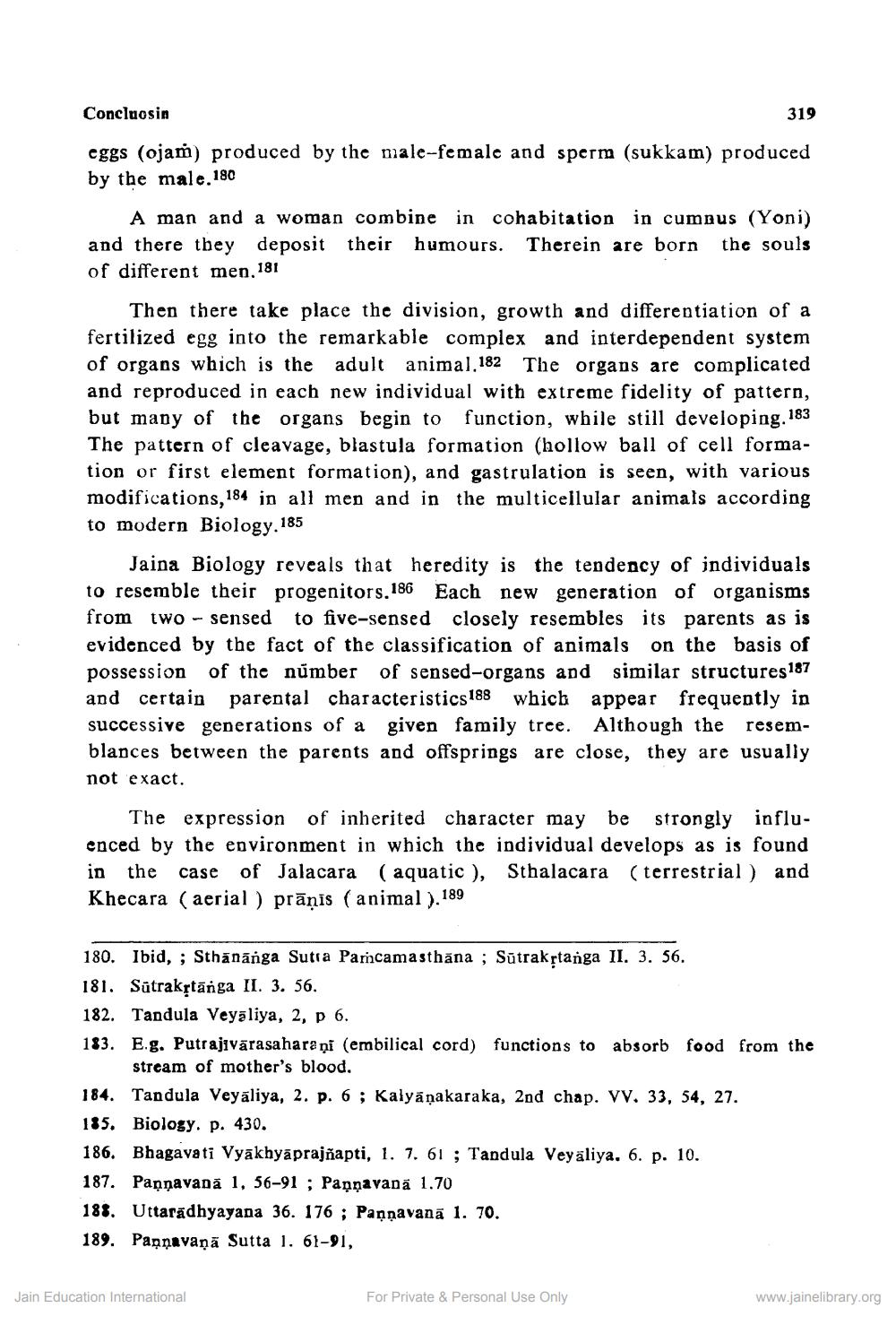________________
Concluosin
319
eggs (ojam) produced by the male-female and sperm (sukkam) produced by the male. 180
A man and a woman combine in cohabitation in cumnus (Yoni) and there they deposit their humours. Therein are born the souls of different men. 181
Then there take place the division, growth and differentiation of a fertilized egg into the remarkable complex and interdependent system of organs which is the adult animal.182 The organs are complicated and reproduced in each new individual with extreme fidelity of pattern, but many of the organs begin to function, while still developing. 183 The pattern of cleavage, blastula formation (hollow ball of cell formation or first element formation), and gastrulation is seen, with various modifications, 184 in all men and in the multicellular animals according to modern Biology. 185
Jaina Biology reveals that heredity is the tendency of individuals to resemble their progenitors. 186 Each new generation of organisms from two - sensed to five-sensed closely resembles its parents as is evidenced by the fact of the classification of animals on the basis of possession of the number of sensed-organs and similar structures 187 and certain parental characteristics 188 which appear frequently in successive generations of a given family tree. Although the resemblances between the parents and offsprings are close, they are usually not exact.
The expression of inherited character may be strongly influenced by the environment in which the individual develops as is found in the case of Jalacara (aquatic ), Sthalacara (terrestrial) and Khecara (aerial ) prānis (animal ). 189
180. Ibid, ; Sthānānga Sutra Parcamasthāna ; Sūtrakstanga II. 3. 56. 181. Sūtrakệtānga II. 3. 56. 182. Tandula Veyaliya, 2, p 6. 183. E.g. Putrajıvārasaharani (embilical cord) functions to absorb food from the
stream of mother's blood. 184. Tandula Veyaliya, 2. p. 6 ; Kalyāņakaraka, 2nd chap. vv. 33, 54, 27. 185. Biology. p. 430. 186. Bhagavati Vyākhyāprajñapti, 1. 7. 61 ; Tandula Veyaliya. 6. p. 10. 187. Paņnavanā 1, 56-91 ; Paņņavanä 1.70 188. Uttaradhyayana 36. 176 ; Pannavanā 1. 70. 189. Pannavaņā Sutta 1. 61-91,
Jain Education International
For Private & Personal Use Only
www.jainelibrary.org




